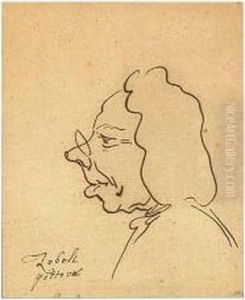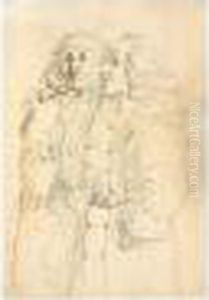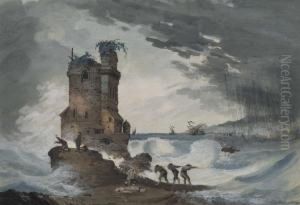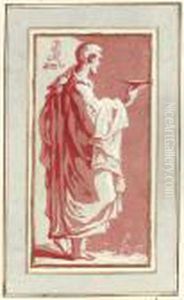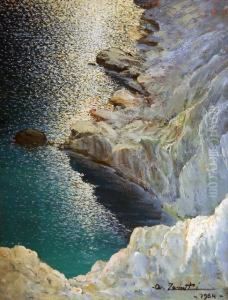Antonio Maria Ii Zanetti Paintings
Antonio Maria Zanetti I, born in 1680 in Venice, was an Italian engraver, art historian, and connoisseur of the arts. Not to be confused with his relative, Antonio Maria Zanetti II, who was also involved in the arts, Zanetti I was known for his contributions to the understanding and appreciation of ancient and Renaissance art in his time.
Zanetti's early life is not well-documented, but it is known that he came from a family with strong connections to the art world in Venice. He developed an interest in classical antiquity and the works of the Renaissance masters, which would shape his career and scholarly pursuits.
In the realm of printmaking, Zanetti was particularly admired for his chiaroscuro woodcuts, a technique that involves the use of different blocks for each color, creating a rich and nuanced image with depth and contrast. His skill in this medium was evident in his reproductions of drawings by famous artists such as Parmigianino.
Beyond his work as an engraver, Zanetti was also an avid collector and scholar. He amassed a significant collection of drawings and prints, which served as a resource for his own work and for the study of art history. His knowledge and expertise were encapsulated in his book, 'Della Pittura Veneziana e delle Opere Pubbliche de Veneziani Maestri,' published in 1771, which provided an extensive review of Venetian painting and public works by Venetian masters. This text remains a valuable resource for the study of Venetian art to this day.
Zanetti's contributions to the Venetian art scene were not limited to his scholarly work. He was also involved in the administration of the arts in Venice, holding positions that allowed him to influence the preservation and promotion of the city's artistic heritage.
Antonio Maria Zanetti I passed away in 1757, leaving behind a legacy as a pivotal figure in the art world of 18th-century Venice. His works, both as an artist and as a historian, continued to influence the appreciation and understanding of art long after his death.
